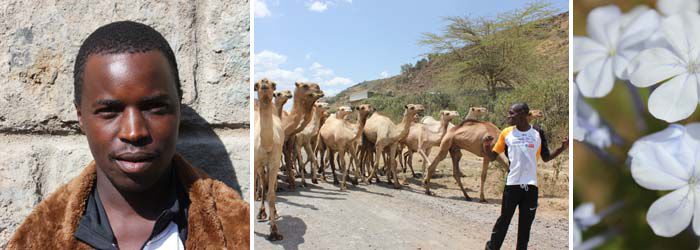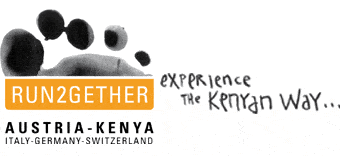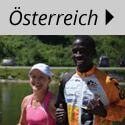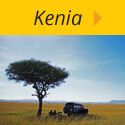Die Preise für Safaris sind “All inclusive”-Preise pro Person. Sie werden organisiert und geführt von unserem offiziellen Kenya-Wildlife-Guide Paul Njogu Gikuni und umfassen Transport, Verpflegung, Nationalparkeintritte, Führung durch Paul, Betreuung durch Läufer des run2gether Teams und bei Mehrtagestouren auch Nächtigung.
1 Tag Mount Longonot
€ 50.- ab 2 Personen, € 70.- für 1 Person; jeweils pro Person
1 Tag Hells Gate + Lake Naivasha
€ 130.- ab 3 Personen, € 170.- bei 2 Personen, € 200.- für 1 Person; jeweils pro Person
1 Tag Lake Nakuru
€ 220.- ab 3 Personen, € 270.- bei 2 Personen, € 320.- für 1 Person; jeweils pro Person
2 Tage Nationalpark Aberdare (1 Nacht)
€ 200.- ab 3 Personen, € 250.- bei 2 Personen, € 350.- für 1 Person; jeweils pro Person
1 Tag NP Nairobi
€ 150.- ab 3 Personen, € 200.- bei 2 Personen, € 250.- für 1 Person; jeweils pro Person
3 Tage Maasai Mara – Flug
Busfahrt nach Nairobi, Flug Nairobi – Maasai Mara, 2 Nächte in Crocodile oder Aruba Lodge mit Vollpension und Safaris mit Jeeps, Rückflug und Busfahrt zum Camp
Preis auf Anfrage
3 Tage Maasai Mara – Jeep
Jeepfahrt in den Maasai Mara Nationalpark, 2 Nächte in Crocodile oder Aruba Lodge mit Vollpension und Safaris mit Jeeps, Busfahrt zum Camp
€ 450.- ab 3 Personen, € 480.- bei 2 Personen, € 500.- für 1 Person; jeweils pro Person
ACHTUNG: Juli-Dezember +100€/Person aufgrund höherer Eintrittspreise
Preis mit Nächtigung im Zelt auf Anfrage
Mount Kenya
Busfahrt zum Ausgangspunkt; Nächtigung und Verpflegung in Berghütten; Besteigung Mount Kenya mit Führer, Rückfahrt
€ 600.- ab 3 Personen, € 700.- bei 2 Personen, € 800.- für 1 Person; ; jeweils pro Person
Ol Pejeta Natur- und Schimpansenschutzgebiet
3 Tage 2 Nächte ab 2 Personen € 500,-, für 1 Person € 600,- ; jeweils pro Person
3 Tage 2 Nächte mit NP Aberdare ab 2 Personen € 700,-, für 1 Person € 800,-; jeweils pro Person
5 Tage Mt Kenya und 1 Nacht Ol Pejeta bei 3 Personen € 800,-, bei 2 Personen € 900,-, für 1 Person € 1000,-; jeweils pro Person
Long Run vom run2gether Mt. Longonot Sports- and Recreation Centre zum Lake Naivasha
Early Morning Run mit anschließendem Frühstück und Rücktransport zum Camp
ab 2 Personen € 30,-, für 1 Person € 50,-; jeweils pro Person
Aufschlag für Bootsfahrt am Lake Naivasha € 40,- pro Person
Weitere Safaris auf Anfrage
Wenn möglich sind die Safaris bereits vor der Anreise zu buchen. Vor Ort können Details und weitere Wünsche mit unserem Guide Paul Njogu Gikuni besprochen werden.
Reiter-Inhalt hier einfügen
Unser Camp liegt am Rande der Siedlung und geht direkt in die freie Savannenlandschaft über. Aufgrund der Hanglage bietet sich ein fantastischer Weitblick Richtung Westen. Auf derzeit in Bau befindlichen neu angelegten Wanderpfaden kann man die nahe Umgebung spazierend erkunden und an Aussichtspunkten relaxen, Afrika-Feeling genießen oder auch nach anstrengenderen Laufeinheiten in der Nachmittagssonne ausgiebig stretchen.
Paul NJOGU, unser Guide, begleitet Euch gerne auf diesen Wanderungen und ist auch verantwortlich für die derzeit stattfindende Anlage der Wege.
Fahrzeit vom Sports Centre: 30 Minuten.
“Heimspiel” für Paul, unseren Guide! Er hat den Mount Longonot jahrelang beinahe täglich in seinem Job als Nationalparkguide bestiegen und kennt jeden einzelnen Stein am Weg zum Gipfel. Er kann euch auch die besten Aussichtsplätze zeigen, die wunderschönen Vögel näher erklären und euch entlang des erst kürzlich angelegten Steiges in den Vulkankrater, mit seiner ganz speziellen Flora und Fauna, geleiten. Lasst euch von diesem noch wenig bekannten, aber äußerst sehenswerten Nationalpark begeistern.
Das Savannen-Ekosystem des Mount Longonot liegt ca. 90 Km von Nairobi entfernt und umfasst gebirgige Erhebungen bis zu einer Höhe von 2.776 m über dem Meeresspiegel. Am Bergrand erstrecken sich V-förmige Täler und Bergrücken mit wenig Vegetation, im Krater findet man dichte Wälder. Neben Wildtieren wie Büffel, Zebras, Giraffen, Eland- und Buschbockantilopen, Grant-, Thomson- und anderen Gazellen, bietet die Region einen erloschenen Vulkan mit dem bewaldeten Krater und Ausblicke auf den Lake Naivasha und das Great Rift Valley, das als Wiege der Menschheit gilt.
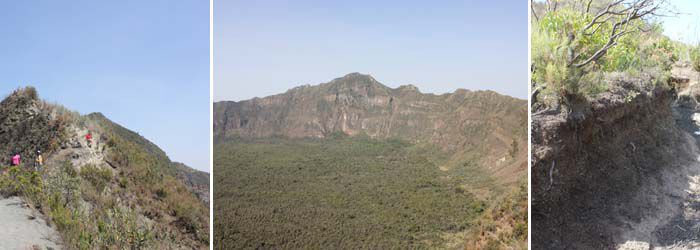
FLÄCHE – 52 km2
LAGE – Naivasha, Rift Valley Provinz
KLIMA – Mittlerer Temperaturbereich von 20-30°C und Regenmengen von 200mm-700mm
HAUPTATTRAKTIONEN – Erloschener Vulkan mit seinem bewaldeten Krater, reizvolle Landschaft, Ausblicke auf Lake Naivasha und das Great Rift Valley. Der Park ist ein Paradies für Greifvögel.
TIERWELT – Büffel, Gazellen, Impalas und Giraffen
UNTERNEHMUNGEN – Wanderungen und Klettern, Spaziergänge, Radfahren
BESTE REISEZEIT – ganzjährig
NÜTZLICHE DINGE – Trinkwasser, Picknick-Zubehör und Campingausrüstung bei Übernachtungen vor Ort. Ebenso nützlich sind: Fernglas, Kamera, Kopfbedeckung, Sonnenschutz, Sonnenbrillen und Reiseführer
KOSTEN – 1 Tag Mount Longonot € 50.- ab 2 Personen, € 70.- für 1 Person; jeweils pro Person
ENTHALTENE LEISTUNGEN – Transport, Eintritt in den Nationalpark Mount Longonot, geführte Wanderung, Trinkwasser, Mittagessen (exklusive Getränke) in einem Restaurant
Fahrzeit vom Sports Centre: 1 Stunde
Hell’s Gate Nationalpark liegt südlich des Lake Naivasha und nordwestlich von Nairobi. Der Park beherbergt eine große Vielzahl von Wildtieren. Es gibt über 100 Vogelarten im Park, wie beispielsweise Geier, Verreux-Adler, Augurbussard und Schwalben. Auch Büffel, Zebras, Eland- und Kuhantilope, Thomson-Gazelle und Paviane sind hier zu Hause. Im Park findet man ebenso Klipspringer-Antilopen und Chanler-Bergziegen.
FLÄCHE & LAGE – 68 Km2, Naivasha , Rift Valley Provinz
KLIMA – Mittlerer Temperaturbereich von 20-30°C und Regenmengen von 200mm-700mm. Zwei Regenzeiten: Lange Regenzeit März & April, kurze Regenzeit November & Dezember
HAUPTATTRAKTIONEN – Spektakuläre Schluchtwanderung, heiße Quellen, Elephant in Eden, Aruba Damm, Wildbeobachtungen, Greifvögel-Nistplätze an Felsen, Mervyn Carnelley Greifvogel Hide, Olkaria Erdwärmekraftwerk, Fischer’s Tower, Touristische Rundwege, Naturpfade und Picknick-Plätze
TIERWELT – Büffel, Zebra, Eland- , Kuh- und Klipspringerantilopen, Thomson Gazellen, Giraffen, Paviane und verschiedene Raubkatzen. Die vielfältige Vogelwelt umfasst 103 Arten
UNTERNEHMUNGEN – Wandern, Klettern, Camping, Radfahren – mit Mountainbikes durch den Wildpark ! Vogel- und andere Tierbeobachtungen
NÜTZLICHE DINGE – Trinkwasser, Picknick-Zubehör und Campingausrüstung bei Übernachtungen vor Ort. Ebenso nützlich sind: Fernglas, Kamera, Kopfbedeckung, Sonnenschutz, Sonnenbrillen und Reiseführer
KOSTEN – 1 Tag Hells Gate + Lake Naivasha € 130.- ab 3 Personen, € 170.- bei 2 Personen, € 200.- für 1 Person; jeweils pro Person
ENTHALTENE LEISTUNGEN – Transport, Bootsfahrt auf dem Lake Naivasha, Einritt in den Nationalpark Hells Gate, Fahrradverleih, geführte Wanderung mit Fahrrad und zu Fuß, Trinkwasser, Mittagessen (exklusive Getränke) in einem Restaurant
Fahrzeit vom Sports Centre: 1 Stunde
Lake Naivasha ist einer der schönsten Rift Valley Süßwasser Seen Kenias. Er ist umgeben von federartigen Papyruspflanzen, sumpfigen Lagunen und grasbewachsenen Ufern. Der See ist kein eigener Nationalpark an sich, da sich das Land rund um den See in Privatbesitz befindet, bietet aber zahlreiche Wildtierattraktionen, die eine Auflistung unter den schönsten Parks rechtfertigen.
Starke Winde am Nachmittag lassen den See schnell sehr rau erscheinen. Die örtlichen Maasai nannten den See “Nai’posha”, das “raues Wasser” bedeutet. Die Briten übernahmen später den Namen falsch und schrieben “Naivasha”. Die Region wurde in den 1930ger Jahren von den berüchtigten Briten ‘Happy Valley’ besiedelt, die das umliegende Farmland aufkauften – die meisten dieser Grundstücke sind immer noch im Besitz von weißen Kenianern.
In dieser Periode war Lake Naivasha auch Kenia’s internationaler Flughafen. Europäische Flugboote landeten auf dem Wasser. Auch heute noch kann man bei niedrigem Wasserstand die hölzernen Begrenzungspfosten sehen, die die damalige Landepiste markierten. Es ist immer noch fruchtbares Farmland, besonders geeignet für Gemüse, Früchte und Blumen.
Dank des neuen internationalen Flughafens in Eldoret können europäische Blumenhändler die Blumen 24 Stunden nach dem Schnitt in den Gärtnereien nahe dem Lake Naivasha verkaufen.
Der See ist 13 km lang, ein seichtes Gewässer mit einer durchschnittlichen Tiefe von fünf Metern und die Heimat von zahlreichen Flusspferden.
Zu Beginn des 20. Jahrhunderts trocknete der See aus ungeklärten Gründen völlig aus, der Seeboden wurde bewirtschaftet, bis der See einige Jahre später nach schweren Regenfällen wieder zurückkam.
Die meiste Fläche des Sees ist von Akazienwäldern umgeben, mit einer Fülle von verschiedenen Vogelarten und dem Schwarzweiß-Stummelaffen. Die Akazien wurden früher “Gelbfieberbäume” genannt, nachdem die ersten Forscher unter den Bäumen campierten und an Malaria erkrankten.
Man kann ein Boot mieten, um Flusspferde, Pelikane und Seeadler hautnah zu beobachten und um nach Crescent Island zu gelangen, einem Schutzgebiet, das eine Wanderung inmitten von Zebras, Antilopen und Giraffen zulässt, die zum Trinken ans Wasser kommen.
Bemerkenswert sind auch die Fischer, die ohne Boote auskommen, indem sie den ganzen Tag im Wasser stehen und mit primitivsten Mitteln ihre Fische fangen.
Da hier keine Raubtiere vorkommen, bietet Crescent Island eine der wenigen Gelegenheiten in Kenia, zu Fuß die Tierwelt zu erkunden.
KOSTEN – 1 Tag Hells Gate + Lake Naivasha € 130.- ab 3 Personen, € 170.- bei 2 Personen, € 200.- für 1 Person; jeweils pro Person
LEISTUNGEN – Transport, Bootsfahrt auf dem Lake Naivasha, Einritt in den Nationalpark Hells Gate, Fahrradverleih, geführte Wanderung mit Fahrrad und zu Fuß, Trinkwasser, Mittagessen (exklusive Getränke) in einem Restaurant
Fahrzeit vom Sports Centre: 2-3 Stunden
Der Nationalpark befindet sich im zentralen Kenia, 140 Km nordwestlich von Nairobi, im Distrikt Nakuru der Provinz Rift Valley. Das Ökosystem umfasst den See mit seinem bewaldeten und buschigen Grünland. Der Park unterstützt eine große ökologische Vielfalt mit Flamingos und anderen Wasservögeln, die eine Hauptattraktion dieser Gegend darstellen. Des Weiteren bietet der Park 56 verschiedene Arten von Säugetieren wie Breitmaulnashörner, Büffel und einer Vielfalt von über 450 Landvogelarten.
FLÄCHE & LAGE – 188 Km2, 160 Km nordwestlich von Nairobi
KLIMA – Temperatur 20 – 30°C, Regenmenge von 200mm-700mm. Zwei Regenzeiten: Hauptregenzeit – März & April; zweite Regenzeit – November & Dezember
HAUPTATTRAKTIONEN – Fabelhafte Flamingos. Ein ornithologisches Paradies mit 450 Vogelarten, Makalia Wasserfall, Aussichtspunkte: Lion Hill, Baboon Hill. Einige Szenen aus dem Film “Out of Africa” wurden hier gedreht. Berge: Enasoit, Lion Hill, Honeymoon Hill, etc.
TIERWELT – Thomson- und Grantgazellen, Braune Langohrfledermäuse, Stummelaffen, Klippschliefer, Wildkatzen, Flusspferde, Leoparde, Löwen, Nashörner, Wasserböcke, Impalas, Hyänen, Wildhunde, Riedböcke. Über 450 Vogelarten und über 1,5 Millionen Flamingos
UNTERNEHMUNGEN– Tierbeobachtungen, Vogelbeobachtungen, Camping
NÜTZLICHE DINGE – Trinkwasser, Picknick-Zubehör und Campingausrüstung bei Übernachtungen vor Ort. Ebenso nützlich sind: Fernglas, Kamera, Kopfbedeckung, Sonnenschutz, Sonnenbrillen und Reiseführer
KOSTEN – 1 Tag Lake Nakuru € 220.- ab 3 Personen, € 270.- bei 2 Personen, € 320.- für 1 Person; jeweils pro Person
ENTHALTENE LEISTUNGEN – Transport, Eintritt in den Nationalpark, geführte Wanderung mit Bus und teilweise zu Fuß, Trinkwasser, Mittagessen (exklusive Getränke) in einem Restaurant
Fahrzeit vom Sports Centre: 3-4 Stunden
Der Aberdare Nationalpark bedeckt die höhergelegenen Bereiche der Aberdare Bergekette des zentralen Kenias. Die Topographie bietet tiefe Schluchten neben bewaldeten Hügeln. Viele Tiere, wie schwarze Nashörner, Leoparden, Paviane, Stummelaffen, Meerkatzen kann man hier leicht beobachten. Seltener sieht man Löwen, Goldkatzen und die Bongo-Antilope, die in den Bambuswäldern lebt.
Im höhergelegenen Heideland kann man noch Elandantilopen und Buschkatzen finden.
Für Besucher stehen Picknickmöglichkeiten, Forellenfischen und Camping im Heideland zur Auswahl.
Bei Vogelbeobachtungen wird man mit über 250 verschiedenen Arten belohnt, wie beispielweise Jackson’s Francolin, Habicht, Adler, Nektarvogel und Kiebitz.
KLIMA – Nebel und mitunter schwere Regenfälle kommen das ganze Jahr vor, mit Niederschlag von 1000mm jährlich an den nordwestlichen Hügeln und bis zu 3000mm Niederschlag im Südosten.
HAUPTATTRAKTIONEN – Leastima Peak, Kinangop Peak, Wasserfälle, Wanderungen im Heideland, Twin Hills, Elephant Hills und Tafelberge; die zweithöchste Population an schwarzen Nashörnern im vorspringenden und nördlichen Aberdare. Queen Elisabeth besuchte die Tree-tops Lodge in der Nacht, als ihr Vater King George VI verstarb und sie somit ihm auf den Thron folgen sollte. The Kimathi Hideout/Mau Mau Höhlen
TIERWELT – Der Park beheimatet die meisten großen Säugetiere, unter anderem eine große Zahl von Schwarzen Nashörnern; außerdem kommen gefährdete Arten wie Bongos, Riesenwaldschweine, wie auch afrikanische Wildhunde, endemische Ratten und Maulwürfe vor. Weiters zu sehen: Leoparden, Buschkatzen, endemische Vogelarten, Reptilien und Insekten.
VÖGEL – Im Park kommen 250 Vogelarten vor
UNTERNEHMUNGEN – Tierbeobachtungen, Camping, Trekking
NÜTZLICHE DINGE – Trinkwasser, Picknick-Zubehör und Campingausrüstung bei Übernachtungen vor Ort. Ebenso nützlich sind: Fernglas, Kamera, Kopfbedeckung, Sonnenschutz, Sonnenbrillen und Reiseführer.
KOSTEN – 2 Tage Aberdare € 200.- ab 3 Personen, € 250.- bei 2 Personen, € 350.- für 1 Person; jeweils pro Person
ENTHALTENE LEISTUNGEN – Transport, 1 Übernachtung im Hotel, Einritt in die Nationalparks (2), geführte Wanderung, Wasser, Frühstück, Mittag- und Abendessen (exklusive Getränke)
Fahrzeit vom Sports Centre: 1,5 Stunden
Nairobi, die pulsierende Hauptstadt Kenias bietet Zweierlei: Einerseits das Stadtzentrum mit schönen Parkanlagen, historischen Plätzen und Bauwerken, andererseits nur 10km außerhalb des Zentrums den Nairobi Nationalpark. Im Rahmen eines Tagesausflugs verbinden wir Großstadt und Tierwelt zu einem eindrucksvollen Einblick in Kenias vielfältiges Leben.
Auch hier findet man verschiedene Vegetationstypen, wie offenes Grasland und Akazienbusch. Im Westen ziehen sich trockene Wälder ins Hochland und Auländer entlang eines ständigen Flusses. Die südlich gelegenen Athi-Kapiti und Kitengela Ebenen bilden mit ihren Migrationskorridoren während der Regenzeit wichtige Zonen zur Ausbreitung der Tiervielfalt. Künstliche Dämme innerhalb des Parks haben zusätzlichen Lebensraum, vorzugsweise für bestimmte Vogelarten und andere Ökosysteme geschaffen.
Hauptattraktionen sind Schwarze Nashörner, Löwen, Leoparden, Geparden, Hyänen, Büffel, Giraffen, Zebra, Gnus, Antilopen und die über 400 verschiedenen Vogelarten. Andere sehenswerte Orte sind das Ivory Burning Site Monument, die Nairobi Safari Wanderung, das Waisenhaus und Wanderrouten zu den Flusspferd-Pools.
FLÄCHE & LAGE – 117 Km2, Provinz Nairobi
KLIMA – Jänner bis März sind trocken und heiß, April bis Juni sind feucht und heiß, Juli bis Oktober sind warm und feucht
HAUPTATTRAKTIONEN – Der einzige Wildpark der Welt, der so nah an einer Großstadt liegt, Schutzgebiet für Schwarze Nashörner, die eine gefährdete Art darstellen. Der Park wurde im Dezember 1946 amtlich bestätigt. Ivory Burning Site Monument, Nairobi Safari Wanderung und Waisenhaus, großzügige Picknickplätze mit Übernachtungsmöglichkeiten
UNTERNEHMUNGEN – Tierbeobachtungen, Hochzeitsspecials, Bush-Dinner, Team-Building, Film- und Videoproduktionen, Dreistern Restaurant, wo sich die Besucher entspannen können, während sie den Park überblicken, perfekte Ausflugsmöglichkeit für Familien, Paare, Freunde und Familienzusammenkünfte
NÜTZLICHE DINGE – Trinkwasser, Picknick-Zubehör und Campingausrüstung bei Übernachtungen vor Ort. Ebenso nützlich sind: Fernglas, Kamera, Kopfbedeckung, Sonnenschutz, Sonnenbrillen und Reiseführer
TIERWELT – Große Raubtierpopulation, wie Löwen, Leoparden, Geparden und Hyänen, große Zahl von Elandantilopen, Büffel, Nashörner, Zebras und Gnus, Vogelbeobachtung von über 400 Arten, davon allein 20 Zugvögelarten von Europa, Heimat von über 100 Säugetierarten, beeindruckende Gnu und Zebra Wanderung
KOSTEN – € 150.- ab 3 Personen, € 200.- bei 2 Personen, € 250.- für 1 Person; jeweils pro Person
Eine Kombination all dieser Dinge, verknüpft mit der atemberaubenden Stimmung der Gegend, die man schwer in Worte fassen kann, macht die besondere Anziehungskraft der Maasai Mara aus.
FLÄCHE & LAGE – 1510 km2, Narok, Rift Valley Provinz
KLIMA – Während des Tages klettern die Temperaturen selten über 30°C und bei Nacht fallen sie kaum unter 15°C. Regenzeit: April & Mai, November; in dieser Zeit kann die Maasai Mara aufgrund von tiefem “black cotton” Schlamm, teilweise unpassierbar werden. Trockenzeit: Juli bis Oktober, das Gras ist lang und üppig nach den Regenfällen. Dies ist die beste Zeit, die großen Herden von Pflanzenfressern zu beobachten. Heißeste Zeit: Dezember und Jänner. Kälteste Zeit: Juni und Juli, Temperaturen zwischen 20-30°C,
Regenmengen von 200mm – 700mm
HAUPTATTRAKTIONEN – Gnu-Wanderung, große Löwenpopulation, Greifvogelparadies, Heißluftballonfahrten, landschaftliche Attraktionen, Blick auf die offene Savanne und die Weite des blauen Himmels, Rift Valley Felsen, Besuch von Maasai Dörfern
KOSTEN
3 Tage Maasai Mara – Bus; Busfahrt (mit unserem Campbus) in den Maasai Mara Nationalpark, 2 Nächte in der Crocodile – oder Aruba Lodge mit Vollpension und Safaris mit Jeeps, Busfahrt zum Camp; € 450.- ab 3 Personen, € 480.- bei 2 Personen, € 500.- für 1 Person; jeweils pro Person
ACHTUNG: Juli-Dezember +100€/Person aufgrund höherer Eintrittspreise
3 Tage Maasai Mara – Flug; Busfahrt (mit unserem Campbus) nach Nairobi, Flug Nairobi – Maasai Mara, 2 Nächte in der Crocodile – oder Aruba Lodge mit Vollpension und Safaris mit Jeeps, Rückflug und Busfahrt zum Camp. Ã Preise auf Anfrage
ENTHALTENE LEISTUNGEN – Transport, Jeepverleih inklusive Fahrer und Späher; Einritt in den Nationalpark (2x), Trinkwasser, Frühstück, Mittag- und Abendessen (exklusive Getränke)
Fahrzeit vom Sports Centre: 4-5 Stunden
Das Massiv des Mount Kenia ist eine der einzigartigsten Landschaften der Welt und ist UNESCO Weltnaturerbe und UNESCO Biosphärenreservat. Als zweithöchster Berg Afrikas zieht er Bergwanderer an und um das Massiv stauen sich häufig dramatische Wolkenformationen. Seine Gipfel sind vergletschert, die insgesamt acht Gletscher verlieren jedoch seit Jahrzehnten an Größe. Neben alpinem Moorland und Hochgras bilden tropische Regenwälder die außergewöhnliche ökologische Bedeutung des Bergmassives ab. Der erloschene Vulkan war letztmalig vor ca. 3 Millionen Jahren aktiv, wurde 1949 während der Kolonialzeit zum Nationalpark und im Jahr 2000 zum Naturreservat erhoben.
HÖHE & FLORA – Höchster Gipfel: Batian (5.199 m). Vom Fuße des Berges bis zur höchsten Erhebung findet man verschiedene Vegetationszonen. Fruchtbare Felder und Bambuswälder reichen bis 2.500 m. Die Grenze des afro-alpinen Berglandes befindet sich in etwa 3.000 m bis 3.500 m Höhe. Das alpine Moorland reicht bis ca. 3.800 m, das von einzigarten Pflanzen bis in die Höhe von 4.500 m durchzogen ist. Hier wachsen Riesenlobelien, Senezien und das mehrere Meter hohe Tussockgras.´Über einer Höhe von 4.500 m erreicht man die Steinwüste und schließlich die Gletscherregion.
VORBEREITUNG & RISIKEN – Bei schneller Besteigung besteht die Gefahr an Übelkeit und Kopfschmerzen, in manchen Fällen auch an der Höhenkrankheit zu erkranken. Ein mehrtägiger Aufstieg unter einem erfahrenen Guide wird daher empfohlen, der auf deine Bedürfnisse eingehen und die Situation am Berg beurteilen kann. Entlang des Trails gilt es auch auf Wildtiere zu achten.
KLEIDUNG & AUSRÜSTUNG – Die Temperaturen vor allem am Gipfel können auf -10°C fallen, daher sind warme Kleidung für die Nacht, Bergbekleidung, warme Bergschuhe, Regenbekleidung und ein warmer Schlafsack bis -10°C Komfortbereich nötig. Für mehr Information wende dich bitte an unseren Guide PAUL NJOGU.
ROUTEN – Es gibt mindestens sieben verschiedene Aufstiegsrouten zum Gipfel. Abhängig von deiner Zeit, deiner Fitness, dem Budget, der Jahreszeit und deinen Wünschen kann dir unser Guide PAUL die beste Route zusammenstellen.
Sirimon-Route – 4 Tage, 3 Nächte
Eine beliebte, leichtgängige Route mit schönen Ausblicken, die sich mit der eindrucksvollen Chogoria Route zu einer 4-5 tägigen Tour verbinden lässt und die schönsten Seiten einer Mount Kenia Besteigung bieten.
Tag 1: Vom Camp aus durch schroffe Landschaften Zentralkenias mit einem Stopover am Äquator, kurzes Briefing und später Mittagessen in Nanyuki. Transfer zum Sirimon Gate, von wo wir zu unserer ersten 10 km Etappe starten, Aufstieg zu Old Moses auf 3.300 m, Abendessen und Nächtigung.
Tag 2: Nach dem Frühstück Aufbruch zur 16 km Wanderung zum Shipton Camp, Abendessen und Nächtigung
Tag 3: Aufstieg um 3.30 morgens zum Pt. Lenana auf 4.985 m. Nach dem Sonnenaufgang Abstieg zu Mintos Hut oder Shipton Camp zum Frühstück und später weiterer Abstieg zu Meru Bandas oder Old Moses, Nächtigung
Tag 4: Abstieg durch Regenwald, später am Nachmittag zurück zum Run2gether Camp oder zu einer anderen Destination.
Narumoru-Route – 4 Tage, 3 Nächte
Tag 1: Vom Camp aus durch das grüne, schroffe Hochland Zentralkenias erreichen wir die kleine Ortschaft Naru Moru zu einem frühen Mittagessen. Einkauf und Transfer zum Parkhauptquartier zu einer 9 Km Wanderung durch Regenwälder bis zum 3.030 m hoch gelegenen Camp, Abendessen und Nächtigung
Tag 2: Nach dem Frühstück 12 Km Aufstieg zum Mackinder Camp, Abendessen und Nächtigung
Tag 3: Aufstieg um 3.30 Uhr früh zum Pt. Lenana auf 4.985 m Höhe, nach Sonnenaufgang Abstieg zum Mackinder Camp zum Frühstück, im Anschluss weiterer Abstieg zum Camp, Abendessen und Nächtigung
Tag 4: Wir verlassen den Berg durch das Naru Moru Gate, zum Run2gether Camp oder einer anderen Destination
Weitere Routen:
Sirimon-Chogoria Route: 5 Tage und 4 Nächte
Sirimon-Lake Ellis-Chogoria: 7 Tage und 6 Nächte
KOSTEN – € 600.- ab 3 Personen, € 700.- bei 2 Personen, € 800.- für 1 Person; ; jeweils pro Person
ENTHALTENE LEISTUNGEN – Transport, Einritt in den Nationalpark, geführte Wanderung mit Guide und Träger, Trinkwasser, Frühstück, Mittag- und Abendessen (exklusive Getränke)
Hinweis: Für die Träger ist am Ende der Tour in Kenya ein Trinkgeld üblich, die Höhe legt jeder selbst fest.
Fahrtzeit vom Sports Centre: 4-5 Stunden
Ol Pejeta liegt an den Ausläufern der Aberdare Berge und des Mount Kenia und ist ein gutes Beispiel für erfolgreichen Artenschutz in Kenia. Das Wildschutzgebiet ist eines der besten Gebiete, um die seltenen Spitzmaulhörner und Afrikanische Windhunde zu sehen. Hier war das wohl berühmteste Breitmaulnashorn “Sudan” zu Hause, das 2018 im Alter von 90 Jahren gestorben ist.
Der Park weist eine sehr hohe Tierdichte auf, in der auch die “Big Five” zu beobachten sind. Ebenso bietet der Naturschutzpark das von Jane Goodhall iniizierte Sweetwater- Schimpansen-Schutzgebiet, in dem mehr als 50 Schimpansen heimisch geworden sind.
Der Besuch des Ol Pejeta Naturschutzgebietes kann auch sehr gut mit dem Aberdare Nationalpark mit seinen wunderschönen Wasserfällen und beeindruckenden Naturspaziergängen oder der Besteigung des Mount Kenia kombiniert werden.
KOSTEN
3 Tage – 2 Nächte Ol Peteja Naturschutgebiet, inkl. Schimpansenschutzgebiet
bei 2 Personen und mehr € 300,-, für 1 Person € 400,-; jeweils pro Person
3 Tage – 2 Nächte Ol Pejeta Naturschutzgebiet und NP Aberdare
bei 2 Personen und mehr € 450,-, für 1 Person € 600,-; jeweils pro Person
5 Tage Mount Kenia und 1 Nacht Ol Pejeta Naturschutzgebiet
bei 3 Personen € 750,-, bei 2 Personen € 850,-, für 1 Person € 900,-; jeweils pro Person
ENTHALTENE LEISTUNGEN:
Transport, Übernachtungen, Guide, Eintritt in das Ol Peteja Naturschutzgebiet (bei Option Eintritt NP Aberdare, Mount Kenya siehe Beschreibung), Trinkwasser, Frühstück, Mittag- und Abendessen (exklusive Getränke)
Longrun vom run2gether Mt. Longonot Sports- and Recreation Centre zum Lake Naivasha
Dieser Early-Morning-Longrun über 20 Km ist bei unseren Gästen überaus beliebt und führt direkt vom Camp auf 2.400m durch das Dorf Kiambogo, entlang wunderschöner Savannenlandschaft mit großartiger Vegetation, stets leicht bergab, direkt ans Ufer des Lake Naivasha (2.100m). Mit ein bisschen Glück begegnet man Giraffen-, Zebra- oder Antilopengruppen, die auf den weitläufigen Wiesen nach Nahrung suchen. Die Strecke können Nichtläufer auch sehr gut als Wanderung bestreiten, für das letzte Teilstück zum See organisieren wir eine Transportmöglichkeit.
Am Ende des Laufs/der Wanderung werden die Gäste mit einem besonderen Frühstück belohnt. Am Ufer des Sees wartet unser run2gether Jeep mit der Wechselkleidung auf die Läufer. Beim Frühstück in einer am Südufer gelegenen privaten Sanctuary Farm kommt man in den Genuss vieler hofeigener Produkte, während man bequem freilebende Tiere in diesem Schutzgebiet, nur wenige Meter vom Restaurant aus beobachten kann. Natürlich können wir auch, gegen einen kleinen Aufpreis, eine Führung durch die Farm organisieren.
Unweit des Gates zur Farm liegt auch die Bootstation für einen Boat-Trip am Lake Naivasha. (siehe Beschreibung NP Lake Naivasha).
KOSTEN:
2 Personen oder mehr € 40,-, 1 Person € 60,-; jeweils pro Person
bei Option Bootsfahrt am Lake Naivasha € 50,- pro Boot
ENTHALTENE LEISTUNGEN:
Begleitung durch Profiathlet, Guide, Frühstück in der Sanctuary Farm, Wasser, Rückfahrt zum Camp, Zusatzleistungen (Führung durch die Farm, Bootsfahrt am Lake Naivasha)
Unser Touristguide Paul stellt gerne individuelle (auch mehrtägige) Touren für euch zusammen. Bei Interesse wendet euch bitte direkt an ihn.
